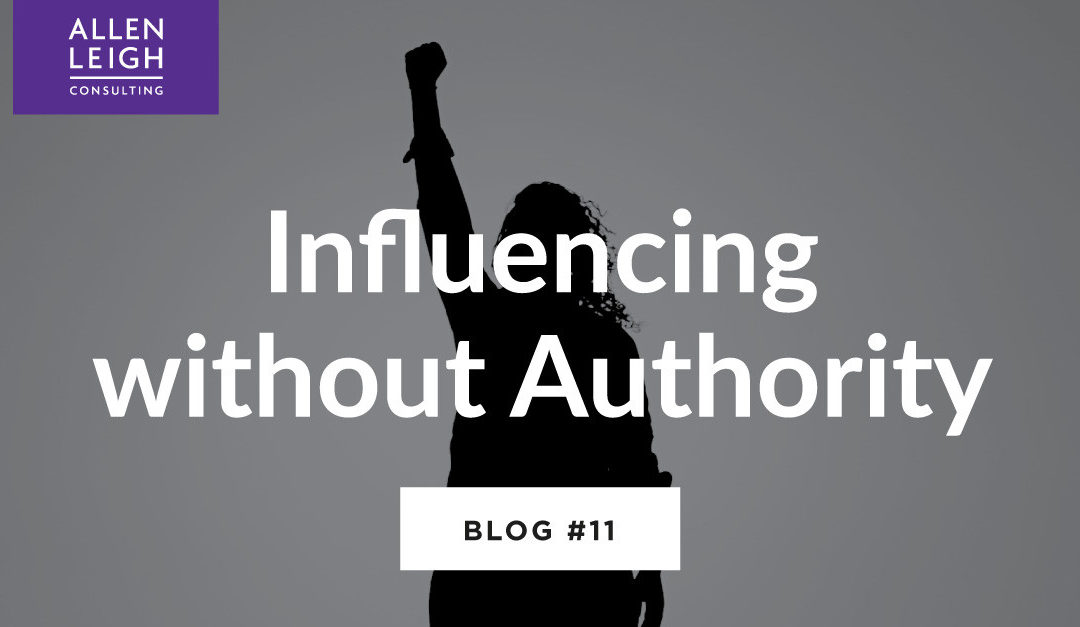Getting others to do what you need them to do in a defined timeline can be challenging.
Many in organizations are responsible for delivering on key tasks while lacking the formal authority to get things done. In these cases, it is the softer side of leadership that is needed in order to lead across boundaries and convince others that what you need is important and worthy of their time and attention. The goal in this intra-professional dance is to use rational wisdom, relationship currency and new ideas to effectively divert your colleague’s work attention your way.
Influence
Influence, is the ability to positively impact another party’s behaviour or decision. Often grouped in with office politics, mind tricks or sales tactics, influence can get a bad rap. On the contrary, influence is not about manipulation but positive impact and presenting information in such a way that key decision holders can make the best decision with the right information.
Too often we are lazy in the way we attempt to influence others, and for good reason. The pace of the middle manager has increased exponentially without the same growth in support. At the same time this pace can’t be an excuse for poor habits into how we support others and help them get the best outcome possible. Effective influence also has a reciprocity effect, where in the long term we spend less time following up and convincing others as we have built higher quality relationships with key colleagues.
Your role in influencing others
1. Get out of your own way: We communicate how we like to receive information and provide feedback in the same way. If you are a details person you also likely communicate with data rather than convince with passion. In my inbox right now I have three, what I call, Factfinder emails. When I open them all I see are words and data, and I think to myself “not now!” Getting others onboard with your ideas or to dos requires matching your style of communication with theirs.
2. Respect the decision maker: Your role in influencing is not to be the decision maker. Ultimately the decision maker is going to make the call, whether we like it or not. It is about increasing the probability of action. Authority is a zero sum game, when you are told to do something from a place of power you will do it, but it comes at a costs. This cost is influence, and the next time you need a favour that is outside the power matrix it is unlikely that your colleague will act in your favour.
3. Connect before you direct: You can’t expect others to give give give. Influence is a two-way street. Every time you make a withdrawal from your relationship which can be a request for action, a favour or simply listening honestly to your ideas you are leaving your account with slightly less currency than before. A good way to make sure that your “emotional piggy bank” as Stephen Covey calls it is full is to connect before you direct. Humans are emotional beings first, not rational, and require a feeling of connection prior to action.
4. Identify key influencers: About 1 in every 15 people are “true influencers.” This means that they have earned the respect of others and their opinion can easily sway others. What I have learned is that this is often not a power position, and influencers can be found in the role of executive assistant, office clerk, production worker or manager. Why these people matter, is that when a decision or change is going to affect multiple groups, “influencers” can be a high leverage point in getting others on board. When launching a big change, I will identify my top influencers and follow-up with them at least 3 times to check-in and see how they are doing. This action greatly reduces resistance and significantly increases the chances of change success.
5. Be a Fox not a Weasel: Karen Hanna from TKB Hanna & Associates talks about two kind of influencers – the fox and the weasel. Influence can sometimes cross the lines into manipulation or selfish behaviour. This type of influencer is the Weasel. To be an effective influencer in your organization you want to be the Fox who is smart, attentive and well intended in the way they impact others
Tools for the Job
- Influence Authority Matrix: There are two types of key influencers in organizations – those with authority and those without. The most impactful influencers are those with High Influence and Low Authority. Think about your organization and see if you can identify who are the “True Influencers.”
- Influence Map: When making a key decision or thinking about how to influence a group, and influence map can be helpful. In this exercise you identify the key decision makers and influencers involved in the decision. CLICK HERE to discover the map, we use it when launching large change initiatives within organizations.



